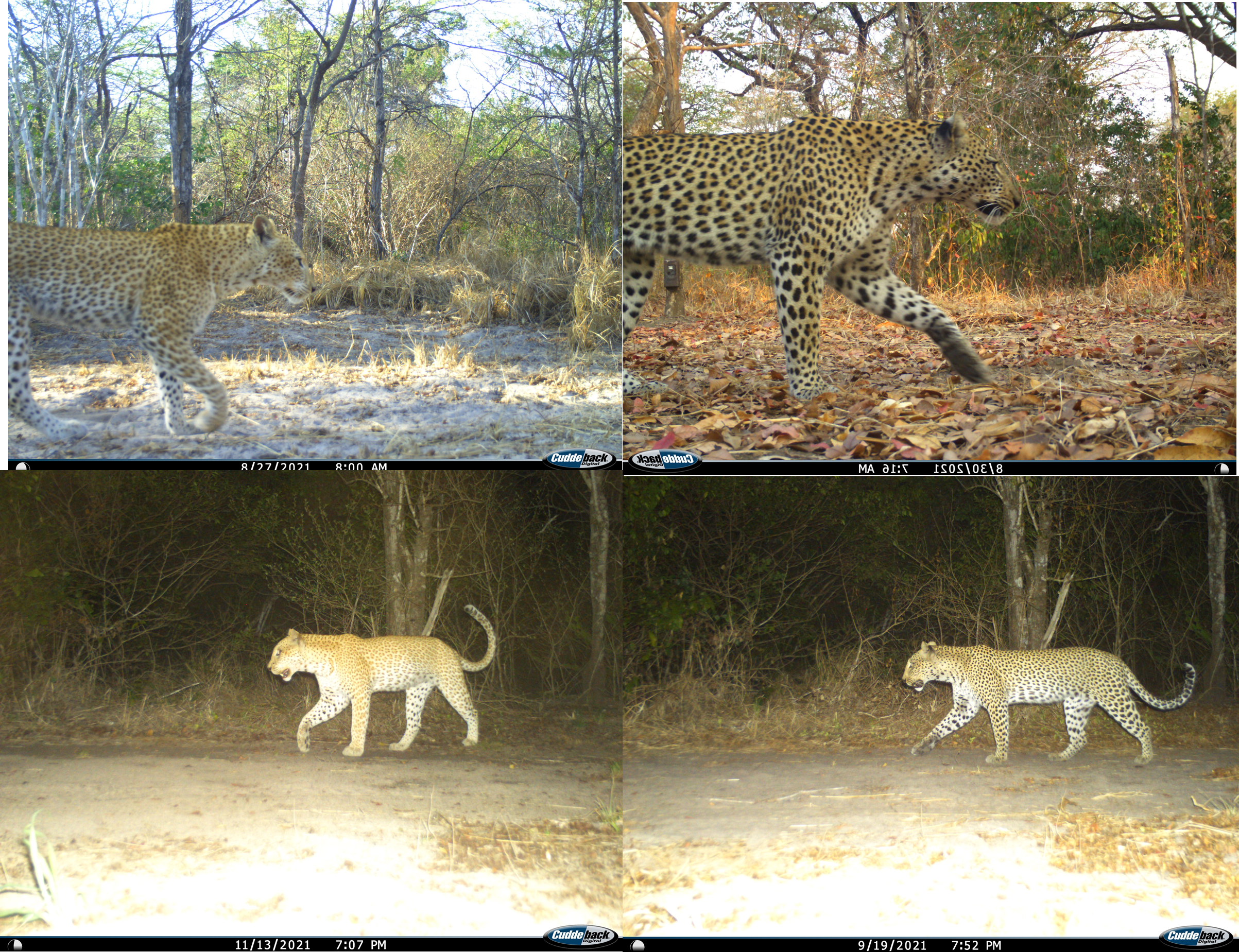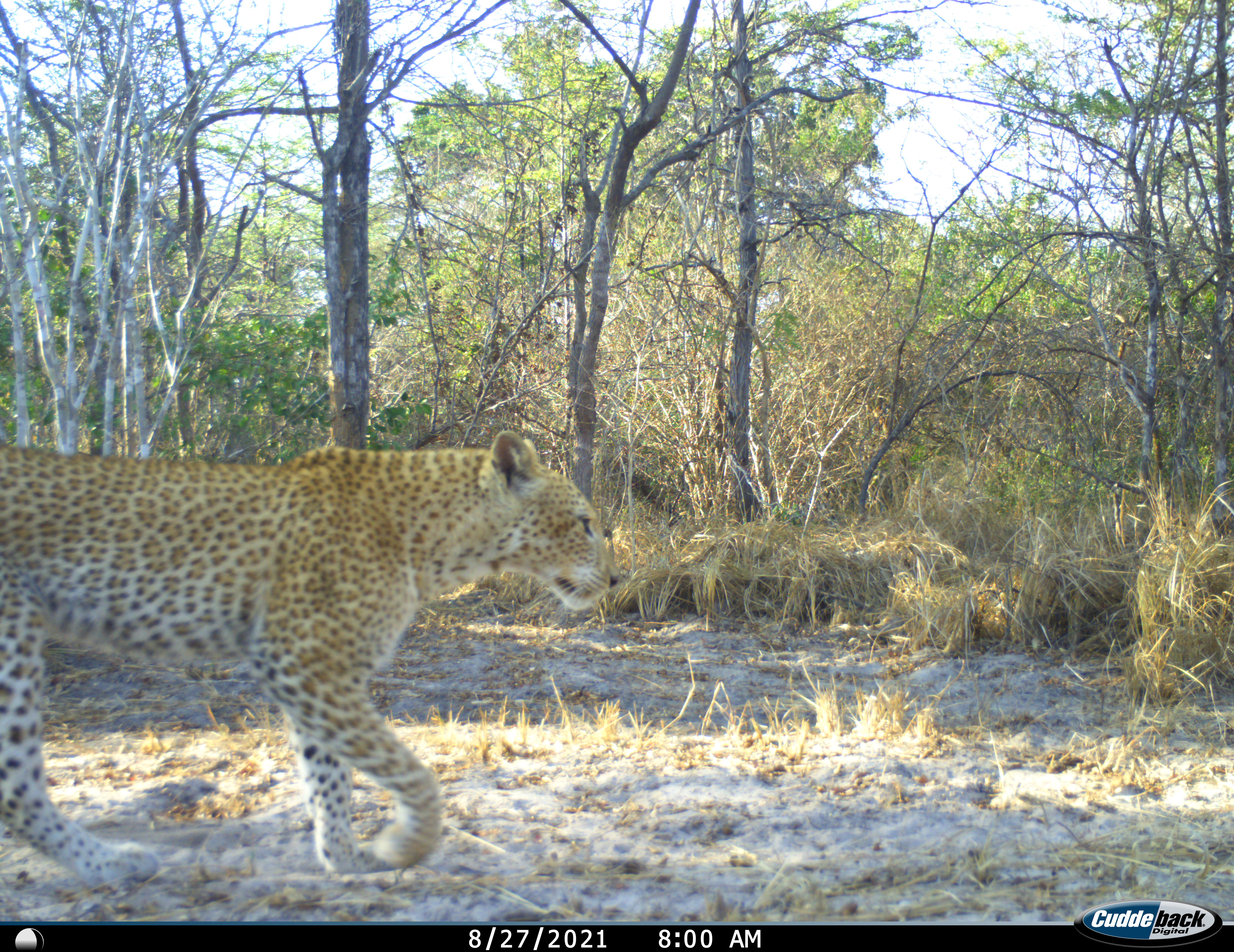News
‘Strawberry’ leopard caught on camera in Tanzania
Today on #WorldLeopardDay we wanted to highlight some of our exciting work on leopards in East Africa. Across the region, we use remotely triggered bush cameras (camera traps) have revolutionised conservation science, and are used around the world to understand animal behaviour, movement patterns, and changes to wild populations. Not only do they allow us to answer fundamental ecological and conservation questions, they can also present some exciting surprises…
Lion Landscapes – co-founded by WildCRU director Amy Dickman – has been working across the Selous-Nyerere landscape in southern Tanzania, partnering with Frankfurt Zoological Society, TAWIRI, TAWA, and TANAPA, to understand carnivore populations across this huge area. Since 2020, over 450 cameras have been deployed to provide baseline information on carnivore density, with surveys resuming this year as soon as the rains end. Aside from many thousands of pictures of all the usual local wildlife, including lions, leopards, spotted hyaenas and African wild dogs, the cameras have also documented something no-one could have predicted: a beautiful female leopard with an unusual difference – she has blush-coloured spots! Known as a “strawberry” color morph, these leopards are extremely rare, and has only ever been recorded a handful times around the world. In Africa, only seven known instances of this color pattern exist on record, making this a very special cat!
Below, the special female next to a standard colour morph during the day (first paired images, “strawberry” left), and at night (second paired images).
This unusual red colouration is called erythrism, and is thought to be caused by a genetic mutation that causes an absence of a normal dark pigment or excessive production of red pigment. But whilst we don’t know for sure why this mutation arises, we don know that this is a very special animal – and a great opportunity to document this unusual genetic quirk (see this NatGeo article and this EarthTouch piece for more). For more information, see our Lion Landscapes blog on this discovery.
Although our team never got to see this leopard in person, the camera traps allowed us a peek into her life – which is one of the perks of doing these kinds of surveys. As the Lion Landscapes team continue processing the thousands of photos taken during last year’s field season, they will be on the lookout for more interesting and unusual things!







